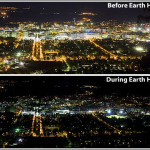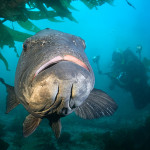![]() Six months ago in the yesteryear of 2008, Machlis and Hanson outlined in Bioscience a new subfield of study titled warfare ecology. As the authors state “among human activities causing ecological change, ware is both intensive and far-reaching. Yet environmental research related to warfare is limited in depth and fragmented by discipline.” The paper is a call to arms for conservationists, policy makers, and scientists alike. Machlis and Hanson outline the field, provide a taxonomy of warfare for organization, review case studies, and look toward the future with recommendations.
Six months ago in the yesteryear of 2008, Machlis and Hanson outlined in Bioscience a new subfield of study titled warfare ecology. As the authors state “among human activities causing ecological change, ware is both intensive and far-reaching. Yet environmental research related to warfare is limited in depth and fragmented by discipline.” The paper is a call to arms for conservationists, policy makers, and scientists alike. Machlis and Hanson outline the field, provide a taxonomy of warfare for organization, review case studies, and look toward the future with recommendations.
The authors rightly suggest that warfare is much more than just an armed, violent conflict, but includes preparations and postwar activities as well. The three stages include a range of activities including: propaganda, civil defense training, recruiting, training, mobilization, R&D, testing, stockpiling, energy and material consumption, peacekeeping, among many others. Each of the stages comes with both unique and overlapping ecological impacts. Essential is that war requires “immense and concentrated” material and energy flows, habitat destruction and degradation, and “uncontrolled extraction of ‘lootable resources’.” Given the complexity of war and the ecological impacts of such, warfare ecology is by necessity interdisciplinary (economics, politics, sociology, ecology, evolution, etc.) and span cross both spatial (local to global) and complexity scales (individual to ecosystem).
Case studies of warfare ecology span back to the 30-40’s with British botanists documenting invasive plants in rubble of bombed London. Testing at the Trinity site in New Mexico in 1947, lead to the field of radiation ecology. The famous ecologist, Eugene Odum’s long-term investigations originated at the Savannah River Plant built for nuclear weapon production. Machlis and Hanson spend a significant portion of the paper thoroughly covering specific cases (I urge you to read through the paper). Interestingly, the authors mention both negative (e.g. tactical oil spills during the first Gulf War impacting wetlands, tidal flats, and seabirds) and positive effects. Training areas, military bases, demilitarized zones, and buffered zones can protect key habitats and harbor biodiversity.
In the ocean realm, warfare also leaves a mark. Many of these we have covered here at DSN. Below are few I came up over the last few months thinking about this excellent article. I will get the list going. Feel free to post specific cases of those here or other examples in the comments (which I will update the list with). If you have blogged on one of these subject make sure to include a link (I am looking at you fellow ocean bloggers)
- Dumping of munitions in the deep-sea including small arm and artillery shells, bombs, biological and chemical weapons.
- Marine invasive species carried in ballast water of military ships
- Degradation and destruction of marine habitats due to artillery weapons training
- Degradation and destruction of marine habitats due to nuclear weapons testing.
- Wartime and postwar sinking of military vessels. This includes proposed artificial reefs.
- Altering coastal ecosystems by building military bases and ports.
- A potential positive is that nuclear weapons testing has provided a tracer in variety of organisms building calcium carbonate skeletons allowing for determination of age and growth. These also provide signals when utilizing corals to reconstruct climate records.
- Sonar testing and training effects on marine mammals.
Warfare Ecology in the future? The future will be bright and cheery future where everyone has enough to eat, there is no war, and we are not trashing the ocean. We will need no warfare ecology. Bwahahahaha. Just kidding. Reverse that. The future holds war and consequences of that course. Machlis and Hanson provide a framework for the future of warfare ecology. Their plan includes the development, testing, and refinement a theoretical framework relying heavily on case studies. More importantly, this theory development includes understanding cascading effects (e.g. refuge movements change land use patterns and concentrate deforestation). Warfare ecology needs to be strongly tied to policy both military and conservation. My favorite recommendation is the “swords to plowshares conservation” in which policy is encouraged where former military sites are repurposed for conservation purposes. I recommend we can take this one step further encouraging policies and efforts that transition military states, local militias, freedom fighters, feuding clans, etc. into environmental stewards.
- Development and testing of theory frameworks (including to case studies)organize interdisciplinary
An excellent write up of this paper occured at Conservation Blog
Machlis, G., & Hanson, T. (2008). Warfare Ecology BioScience, 58 (8) DOI: 10.1641/B580809






Interested folks may also want to look at a 2008 paper calling for better information on chemical weopons dumps in the sea:
Brewer, P. and N. Nakayama. What lies beneath: A plea for complete information. Environmental Science and Technology 2008, March 1, 2008, pages 1394-1399.
MBARI wrote an article about the paper at:
http://www.mbari.org/news/homepage/2008/chemweapons.html
Thanks for the links planktongrl!
This was a very interesting article thanks for sharing, it really bugs be at the fact that we just have no regard to all things living and that we just destroy everything and the sea is one thing that we really have to stop damaging.
Thanks for the link that too was a great article.:)